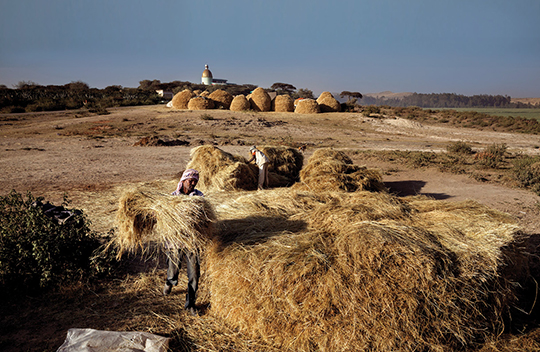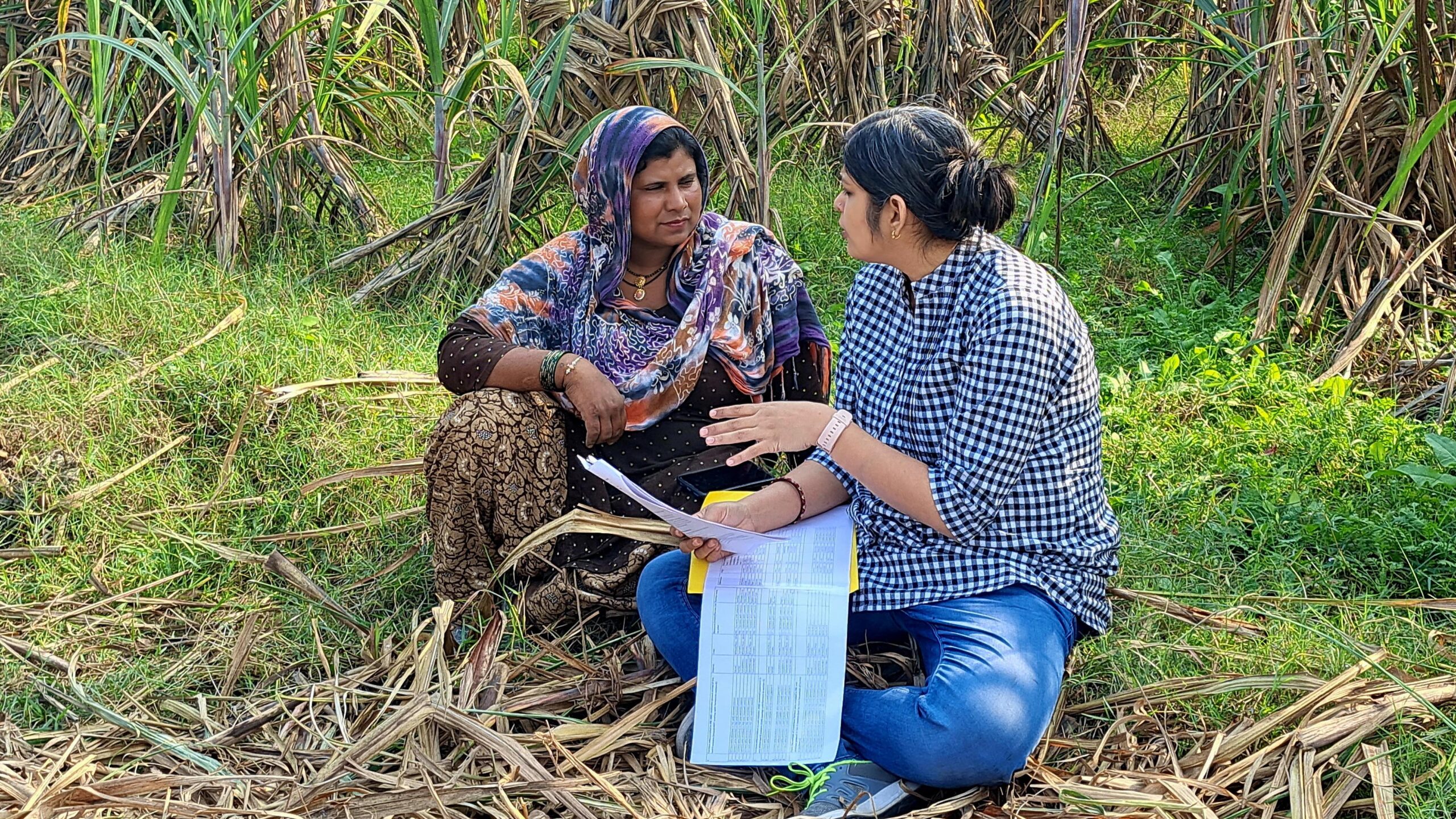This post was originally published on the Insights magazine website.
The grain teff has been consumed as a staple in Ethiopia for centuries but is little known outside the country. Now, researchers are training their attention on this understudied crop.
Farmers in Ethiopia grow teff the same way they have for centuries.
Teff might be the most important little grain you’ve never heard of. It is a major staple crop in Ethiopia, where tens of millions of people eat it every day. One-fifth of all land under cultivation in Ethiopia—about 2.7 million hectares—is used to grow teff, yet farmers’ yields remain low. Unlike wheat and rice, the crop has not been the subject of decades of agricultural research.
Teff is “kind of an orphan crop,” says Bart Minten, an IFPRI senior research fellow based in Addis Ababa, where he serves as director of the Ethiopia Strategy Support Program. “Very little research has been done on it, so there’s very little known about the crop.” IFPRI researchers are working with partners in Ethiopia to learn more about teff to lay the groundwork for more productive teff farming. Two working papers—“Perceptions, Impacts, and Rewards of Row Planting of Teff” and “Teff: Nutrient Composition and Health Benefits”—have been published so far, and a book is in the works.
A Grain in Demand
One thing we do know: interest in teff is increasing, driven by two factors—one domestic and one international. First, teff is an “economically superior good” in Ethiopia, more desirable than other grains like sorghum and maize, and therefore more expensive. Ethiopia’s economy is booming and people are increasing in wealth—and as they do, they want more teff.
Second, because teff is gluten-free—as well as being high in iron, calcium, and fiber—it is generating great interest as a potential export crop to Europe and the United States, where demand for gluten-free products continues to grow. But before this can happen, the Ethiopian government would need to lift its ban on teff exports; the government still harbors concerns that international demand could drive up domestic teff prices and hurt Ethiopian consumers.
Room for Improvement
According to Minten, the time is ripe for investing in research and development of improved teff varieties. “There has not been enough investment in seed development,” he says. “It’s grown only in Ethiopia and Eritrea, so there’s no spillover like you have for maize, wheat, or rice, which are grown all over the world, so you can get better varieties from other countries.” Recent experience with the quncho seed, one of the few improved teff varieties to be introduced in Ethiopia, is encouraging. Quncho has spread quickly and given farmers greater yields and higher prices at market.
Better farming techniques could also help. Farmers commonly sow seeds by broadcasting them, using lots of seed yet producing only modest yields. IFPRI’s research shows that planting the seeds in rows could boost yields, but farmers are sometimes reluctant to adopt this more labor-intensive approach. Development of a mechanical row planter could be a real boon, changing farmers’ cost-benefit picture and giving them higher returns.
For more information on this topic:
Joachim Vandercasteelen, Mekdim Dereje, Bart Minten, and Alemayehu Seyoum Taffesse, “Perceptions, Impacts, and Rewards of Row Planting of Teff,” ESSP Working Paper 65, IFPRI, May 2014.
Kaleab Baye, “Teff: Nutrient Composition and Health Benefits,” ESSP Working Paper 67, IFPRI, September 2014.







